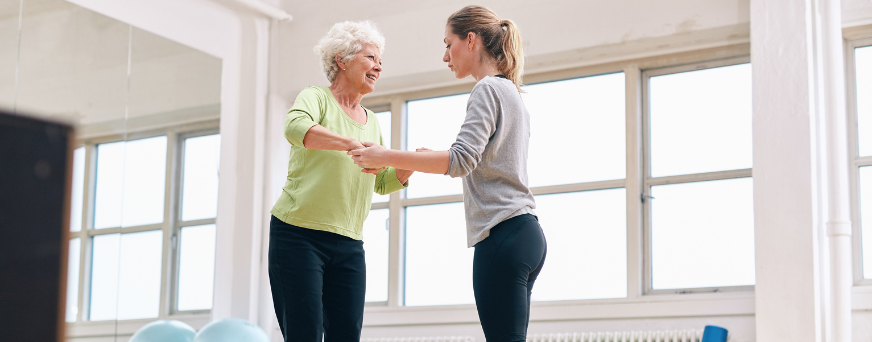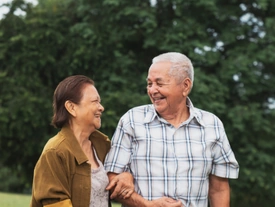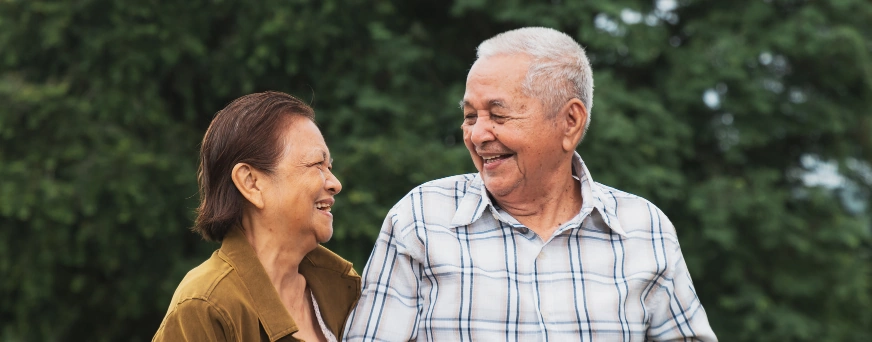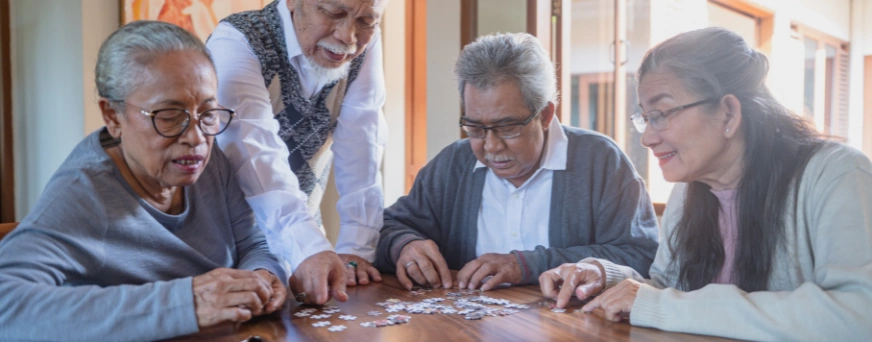The Most Important Balance Exercises For Seniors
Key Takeaway
Balance exercises like heel-to-toe walking, single-leg stands, side leg lifts, and seated reach improve stability, coordination, and confidence. Combined with strength and flexibility training, these can reduce fall risk, support independence, and enhance daily mobility.
A sense of balance is crucial to one's mobility and independence as one gets older. Diminished balance increases the risk of falls, which may cause severe injury—especially affecting quality of life. According to the Centers for Disease Control and Prevention (CDC), one in four older adults falls each year, with falls being the leading cause of both fatal and non-fatal injuries among seniors.
Fortunately, incorporating exercises that improve balance into one’s routine can significantly enhance stability and coordination, helping seniors stay balanced and live life to the fullest.
Regular practice of balance exercises can prevent falls and make seniors feel more confident in their ability to move safely.
Benefits of Balance Exercises for Seniors

First and foremost, practicing balance exercises can drastically reduce the chances of falling, particularly when walking on uneven surfaces or recovering from an unexpected stumble. Improved balance also increases overall strength and flexibility, making daily activities safer and easier to perform.
Falls are not an inevitable part of aging. They are preventable with the right exercise regimen, making it important to address the causes of balance issues proactively.
Moreover, balance exercises contribute to greater independence, and the coordinated movements involved can have a positive impact on cognitive function as well.
Common Risk Factors for Falls Among Seniors
Falls often result from a combination of factors that increase risk. Some common risk factors include:
-
Medication: Certain medications, such as sedatives or blood pressure drugs, can cause dizziness, increasing the risk of falls.
-
Home Hazards: Cluttered environments, poor lighting, and uneven floors can lead to falls.
-
Health Conditions:
Conditions like arthritis, vision impairments, or neurological disorders affect balance and mobility.
Understanding these risk factors helps seniors and caregivers identify and address potential fall hazards in the home and daily routines.
10 Exercises for Seniors to Improve Their Balance and Stability
Here are some of the top balance exercises for seniors:
-
Heel-to-Toe Walking
Walk straight ahead, placing each heel directly in front of your toe. If necessary, use a wall or chair for support. This helps improve coordination and stability, reducing fall risk. -
Single Leg Stand
Stand beside a chair and raise one leg, balancing on the other. Hold for 30 seconds and switch. Gradually increase the time. This strengthens legs and improves balance. -
Side Walking with Arm Raises
Walk sideways with baby steps, raising the opposite arm overhead with each step. Modify the movement by adjusting arm height. -
Chair Stands
Sit on a chair and rise slowly to a standing position using your legs, not your arms. This strengthens your lower body, enhancing overall stability. -
Yoga (Basic Poses)
Basic yoga poses improve flexibility and balance, and chair yoga is a great option for seniors. Yoga also encourages relaxation and mindfulness, which is beneficial for mental well-being. -
Calf Raises
Stand shoulder-width apart and rise onto your tiptoes. This strengthens the calves, providing greater lower-leg stability. -
Side Leg Lifts
Support yourself on a chair and lift one leg to the side. Hold, then lower. Repeat on each side. This exercise strengthens hip muscles that support balance. -
Overhead Reach
Reach overhead with one arm, as if trying to touch something on a shelf. Hold, then lower your arm. This exercise strengthens the core and shoulders, both essential for balance. -
March in Place with Arm Circles
March in place while making small arm circles. This combines balance and cardiovascular health while improving coordination. -
Picking Up Objects from the Floor
Practice bending to pick things up, engaging your core to maintain balance. This helps strengthen the body and improves the ability to perform everyday tasks safely.
Strength Exercises for Seniors: Supporting Balance with Muscle Strength

Balance isn’t only about stability; muscle strength plays a crucial role in supporting good posture and movement. Strength exercises should be incorporated alongside balance exercises for overall physical health. Some examples include:
-
Wall Pushups: Stand facing a wall and perform pushups with your hands placed on the wall. This strengthens the arms, shoulders, and chest muscles.
-
Back Leg Raises: Stand behind a chair, holding it for support, and slowly raise one leg behind you, strengthening the lower back and legs.
Guidance for Gradual Progression and Integration into Daily Routines
When starting strength exercises, begin with lower repetitions and gradually increase over time as you build strength and confidence. Aim for 5-10 repetitions initially, then add more as your muscles grow stronger. Incorporating these exercises into your daily routine will help build strength over time, contributing to better balance.
The Complementary Role of Strength, Flexibility, and Balance Exercises
Strength and flexibility exercises complement balance exercises by improving muscle power, joint flexibility, and overall physical health. Flexibility exercises, such as stretching, promote joint mobility and muscle elasticity, making balance exercises more effective. Combining these forms of exercise enhances stability, reduces the risk of falls, and supports a greater quality of life.
Conclusion
Falls are preventable, and with consistent practice of balance, strength, and flexibility exercises, seniors can significantly reduce their risk. Regular exercise not only decreases the likelihood of falling but also increases muscle strength, flexibility, and self-confidence. It can even boost cognitive health, helping seniors maintain their independence and enjoy daily activities with greater ease.























